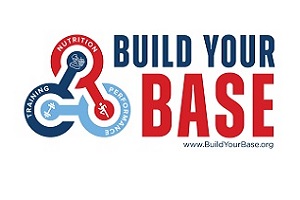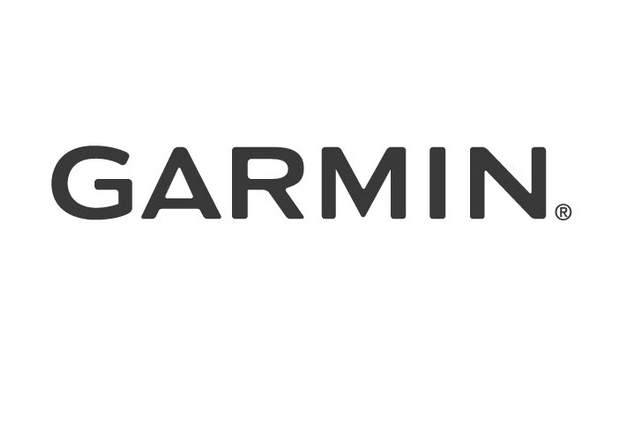Jim Spier’s Blog: World Youth Champs in Cali: Getting There and 1st Day
2015 IAAF World Youth Championships, Cali, Colombia
Getting There
The World Championships are one of the highlights of the year for me. The World Youth and World Junior Championships alternate each year, with this year’s World Youth Championships being in Cali, Colombia. (Add the Youth Olympic Games every four years, and the Pan American Junior Championships every odd year, and one can stay pretty busy on the world scene each summer).
Getting to these venues has become more and more challenging each year. There are more people flying and not that many more seats available. So I’ve come to expect the worst. This trip was really not too bad. I had three flights (Raleigh-Charlotte, Charlotte-Miami and Miami-Cali) and each one was one hour late. So at least they were consistent.
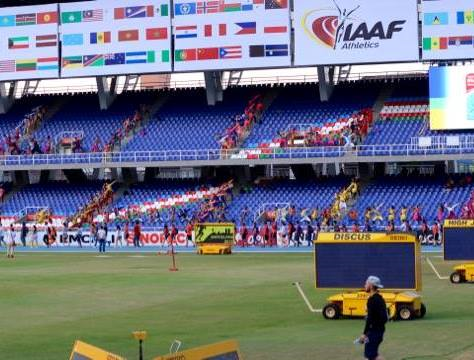 I did have a 5-hour layover in Miami and got caught up on some reading. We took off at 6:20pm on Monday (July 13) instead of 5:20pm. It was an uneventful flight, and we landed only one-half hour late. Cali’s time zone is equivalent to that of the central time zone in the U.S., so it is one hour “behind” that of the east coast.
I did have a 5-hour layover in Miami and got caught up on some reading. We took off at 6:20pm on Monday (July 13) instead of 5:20pm. It was an uneventful flight, and we landed only one-half hour late. Cali’s time zone is equivalent to that of the central time zone in the U.S., so it is one hour “behind” that of the east coast.
Once landed, getting through customs was the first hurdle. There was a “rope” line in the center of the hallway approaching customs which was supposed to guide travelers in an orderly fashion. But many of the locals really didn’t pay attention to that and walked outside of that line. In essence, they “cut ahead.” Fortunately the line was not too long, so getting through customs was relatively easy.
Next was finding the volunteers to organize the bus ride to the hotel (about 15 miles). There was no one in the terminal, but found a group waiting just outside. A young, enthusiastic volunteer took my information and said the bus would be by in “5 minutes.” Experience has taught me to know better.
I did see Alberto Juantorena outside, the great Cuban Olympic champion. I had gotten to know him in recent trips to Havana. I chatted with him a bit while waiting.
I also had a talk with the Japanese photographer, Jiro Mochizuki, who I had gotten to know over the past dozen years. He is an institution at all of the major meets - the Olympics, Senior World Championships and the Diamond League. He spoke of Sani Brown, the 100-meter favorite. Brown is the son of a Japanese mother (a former sprinter) and Ghanian father and will be tough to beat.
Finally (45 minutes later) a bus showed up. The first group they put on was the Jamaican team, then the journalists (about 5 of us). They counted the remaining seats and figured that could fit the 10 Estonians.
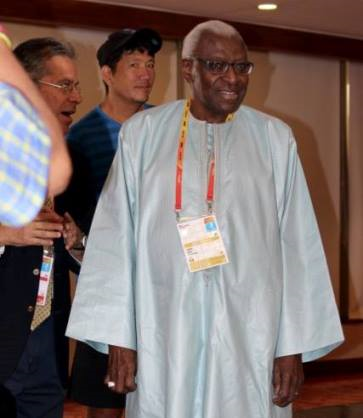 So we’re off. Or so I thought. One of the Jamaican journalists did not have a hotel reservation. So the volunteers helped get him one. That took 20 minutes or so. We had no choice but to wait. But we finally took off.
So we’re off. Or so I thought. One of the Jamaican journalists did not have a hotel reservation. So the volunteers helped get him one. That took 20 minutes or so. We had no choice but to wait. But we finally took off.
We were escorted by a policeman on his motorcycle. But neither he nor the bus driver seemed to know the way. It took about an hour to get to the Hotel Chipechapy (chippee-chappee). That’s where the Jamaicans and Estonians were staying.
But there was an Egyptian athlete and her coach standing outside the hotel. They were not with our group but apparently thought they had a room at this hotel. They didn’t. And they did not have a hotel to go to. So we waited while they tracked down a hotel for them. They hopped on the bus after about a ½ hour wait.
Next stop was the hotel for the Jamaican journalist. There was some difficulty finding that one, but the driver managed. Now we had to find the hotel for the Egyptian athlete and her coach. Again, a bit more difficulty, but “we” found it.
There are the five of us left now on the bus and we’re getting pretty “antsy.” The driver assured us that our hotel, the Sheraton Four Points, was next. It was, and what should have been a ½ drive from the airport took almost 3 hours.
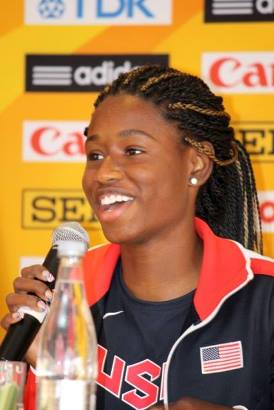 I checked into the hotel at 11:30pm with no difficulty, then collapsed into my bed. I had been up since 5:00am (4:00am Cali time) and the rest was welcomed.
I checked into the hotel at 11:30pm with no difficulty, then collapsed into my bed. I had been up since 5:00am (4:00am Cali time) and the rest was welcomed.
First Day in Cali
Steve Underwood had gotten there a day earlier, so he was already situated.
Joy Kamani had landed after midnight that morning. She arrived at the hotel at 1:30am and found that there was no room for her. (Understand that these are all prepaid and the reservations are guaranteed; or so we thought). When they told her that there was no room she said, “Oh yes there is!”
She persisted and got her room. Unfortunately, the toilet had no seat, but at least the room had a bed! She arranged to get a new room the following day (with a toilet which had a seat).
After breakfast, we hopped on the bus provided by the local organizing committee (LOC) and headed to the stadium to get our credentials. Except the bus stopped at several hotels along the way. One of the hotels was the Intercontinental, the meet headquarters hotel, and the hotel where the U.S. was housed. At that moment was the introductory press conference. So we decided to go the press conference and get our credentials later.
The press conference included IAAF President Lamine Diack, the mayor of Cali and the head of the LOC. Diack and the mayor made their opening remarks and then answered questions. There were probably 80 journalists and photographers in the room.
Next, several athletes were brought to the dais, to introduce themselves and answer questions. They included Makkel Masso, the 26-8 long jumper from Cuba (who the 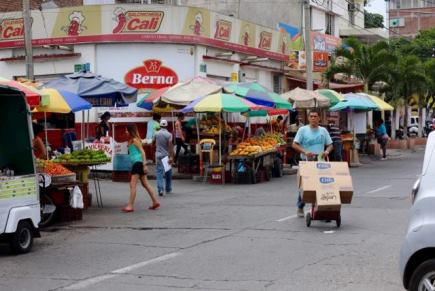 NSAF team competed against at CSI in Cuba); Jack Hale, an Australian sprinter; Khalifa St. Fort of Trinidad (who attends St. Thomas Aquinas in Fort Lauderdale, FL) and U.S. sprinter Candace Hill. All answered questions and had photos taken. And all were impressive in their composure and their responses, most notably Candace Hill.
NSAF team competed against at CSI in Cuba); Jack Hale, an Australian sprinter; Khalifa St. Fort of Trinidad (who attends St. Thomas Aquinas in Fort Lauderdale, FL) and U.S. sprinter Candace Hill. All answered questions and had photos taken. And all were impressive in their composure and their responses, most notably Candace Hill.
We made it over to the stadium and picked up our credentials. We were told of a great lunch place near the Mercado Alameda (one of the local farmer’s markets), so we headed there in a taxi.
A note about Cali taxis: they are incredibly inexpensive. A typical ride cost from 3,000 to 6000 pesos. There are about 2600s peso to one dollar, so the fare is usually in the $2-$4 range. And tipping is not required nor expected. But, as an American, I can’t help myself but to tip.
So we found this very nice air-conditioned restaurant across from the market. We each had some variety of seafood with rice. It was a good thing we ordered the half-portion; the half-portion was enough for at least 2 people. Each was about $9.00. None of us could finish what we had.
We took a taxi back to the hotel. By now it was about 4pm. There was a bus back to the stadium at 4:30 which we took since Joy had to be at a 5:30pm photographers’ briefing.
While Joy was doing that, I watched the opening ceremonies rehearsal. It will be quite impressive, with 100-plus dancers (Cali bills itself as the “Salsa Capital of the World”).
We were still quite full from lunch so managed to find a salad bar and called it a night.
Now the fun begins, and we’ll see how the U.S. team rises to the occasion. I walked the infield at the 36,000-seat stadium and was reflecting on what the kids must feel when competing there. It will be the first time for them to compete in such a controlled environment. It will be all new to them. I believe most will handle it well.

